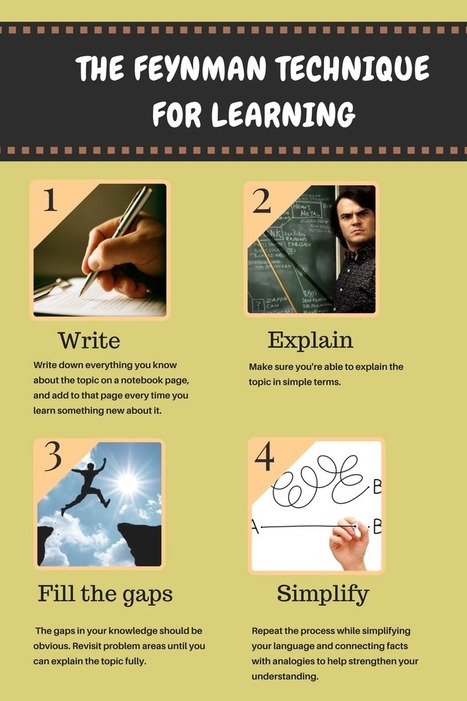The Feynman Technique is perfect for learning a new idea, understanding an existing idea better, remembering an idea, or studying for a test. The Feynman Technique is a mental model that was coined by Nobel-prize winning physicist Richard Feynman. Known as the "Great Explainer," Feynman was revered for his ability to clearly illustrate dense topics…
Learn more / En savoir plus / Mehr erfahren:
http://www.scoop.it/t/21st-century-learning-and-teaching/?&tag=Radical+Pedagogy
Via Gust MEES, Jim Lerman, Lynnette Van Dyke



 Your new post is loading...
Your new post is loading...










